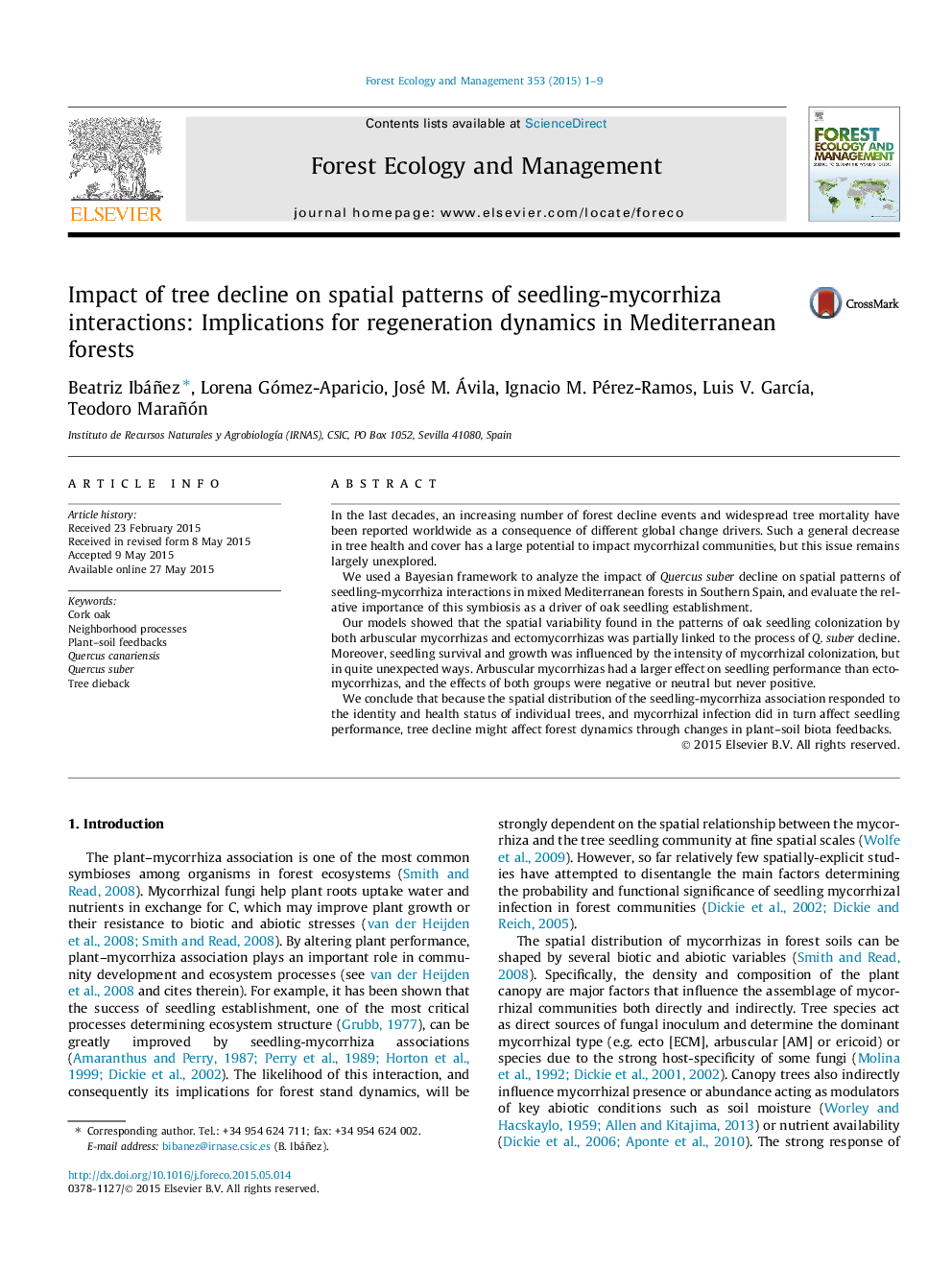| Article ID | Journal | Published Year | Pages | File Type |
|---|---|---|---|---|
| 86212 | Forest Ecology and Management | 2015 | 9 Pages |
•Tree decline might affect forest dynamics through plant–soil biota feedbacks.•Spatial variability of mycorrhiza in oak seedlings is partially linked to Q. suber decline.•Seedling performance was influenced by mycorrhizal colonization in unexpected ways.
In the last decades, an increasing number of forest decline events and widespread tree mortality have been reported worldwide as a consequence of different global change drivers. Such a general decrease in tree health and cover has a large potential to impact mycorrhizal communities, but this issue remains largely unexplored.We used a Bayesian framework to analyze the impact of Quercus suber decline on spatial patterns of seedling-mycorrhiza interactions in mixed Mediterranean forests in Southern Spain, and evaluate the relative importance of this symbiosis as a driver of oak seedling establishment.Our models showed that the spatial variability found in the patterns of oak seedling colonization by both arbuscular mycorrhizas and ectomycorrhizas was partially linked to the process of Q. suber decline. Moreover, seedling survival and growth was influenced by the intensity of mycorrhizal colonization, but in quite unexpected ways. Arbuscular mycorrhizas had a larger effect on seedling performance than ectomycorrhizas, and the effects of both groups were negative or neutral but never positive.We conclude that because the spatial distribution of the seedling-mycorrhiza association responded to the identity and health status of individual trees, and mycorrhizal infection did in turn affect seedling performance, tree decline might affect forest dynamics through changes in plant–soil biota feedbacks.
